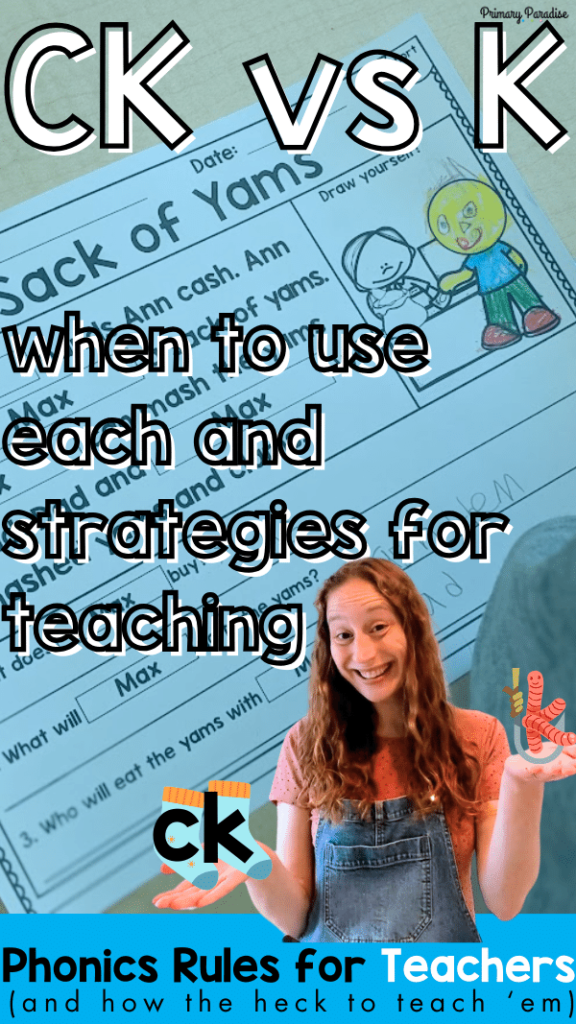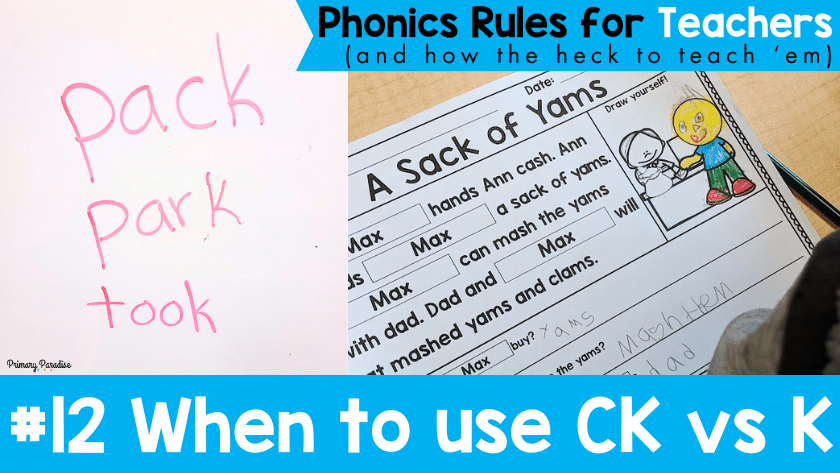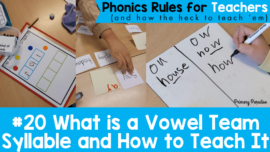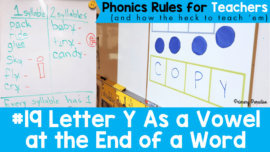How can you know when to use CK or K at the end of a word? There is a simple, easy to follow rule that you can teach your students. Help them feel confident when spelling works that end with the /k/ sound, and understand which one to choose every time.
This is post 12 in my series Phonics Rules for Teachers (and How the Heck to Teach ‘Em). If you’d like to see previous posts, you can click here.
Would you rather listen or watch? Find a podcast version of this blog post here, or watch the video below.
What’s the difference between ck and k?
Both ck and k represent a hard /k/ sound. Most syllables in English that end with a /k/ sound are not spelled with a c (although there are some exceptions) which means we will either use a ck or a k. But how do we know which one to use?
There’s actually a very simple rule to know when a syllable ending with a /k/ sound will have ck or k.
When to use CK
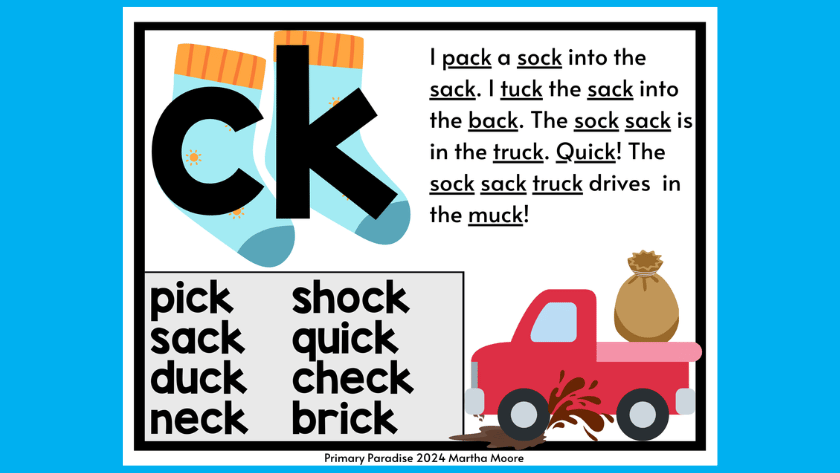
When we have a one syllable word with a single short vowel followed directly by the hard /k/ sound, we spell it with ck. Some examples are pack, lick, chuck, mock, and peck. As you can see, these words all have a single vowel representing a short sound directly before the /k/ sound.
When to use K
When we have a one syllable word with a any other type of vowel or there is a consonant sound between the short vowel and /k/ sound, we use k. Some examples are pork and mark (r controlled), cloak and break (vowel team), chunk and milk (another sound between the short vowel and /k/ sound).
The easiest way to remember this is to learn that it’s ck directly after a single short vowel and k in all other cases.
How to Teach CK vs K
Use Visuals and a Rhyme
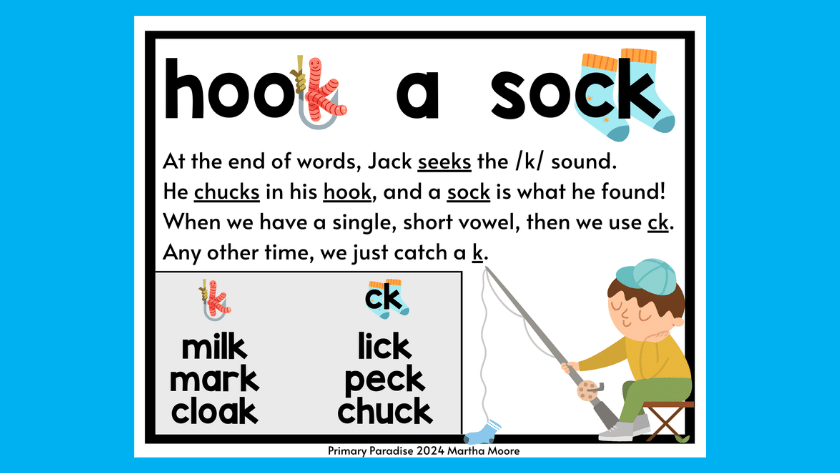
Start by sharing this rhyme with your students. The visual of the hook and the sock for each spelling pattern helps to reinforce when to use k or ck. If your students have only learned short vowels at this point, that’s okay. They can still see the patterns visually. This is a great thing to review as you learn new syllable types as well.
Word Sort
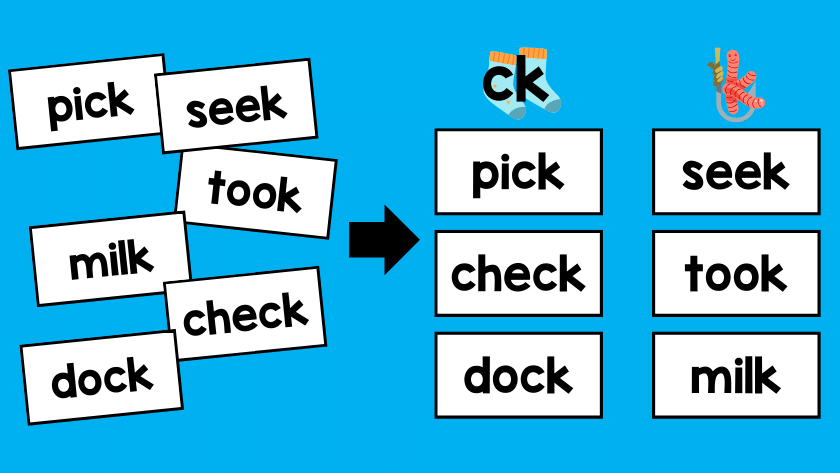
Word sorts are a great way to help students see the difference between different spelling patterns. Having students practice sorting words by ck or k is a great way to highlight when we use each.
Magic Word Change Game

The magic word game is one of my favorite games to help students practice new phonics skills and review old skills at the same time. All you need are whiteboards and markers. Start with a word and change/add/remove one letter at a time to make new words. You can do this when you’re just learning ck, and when you’ve learned new syllable types you can play this to highlight when we use k vs ck. For example, you could start do a sequence like this- sock- rock- rook, book- took- tock- shock- shook.
Word Hunt
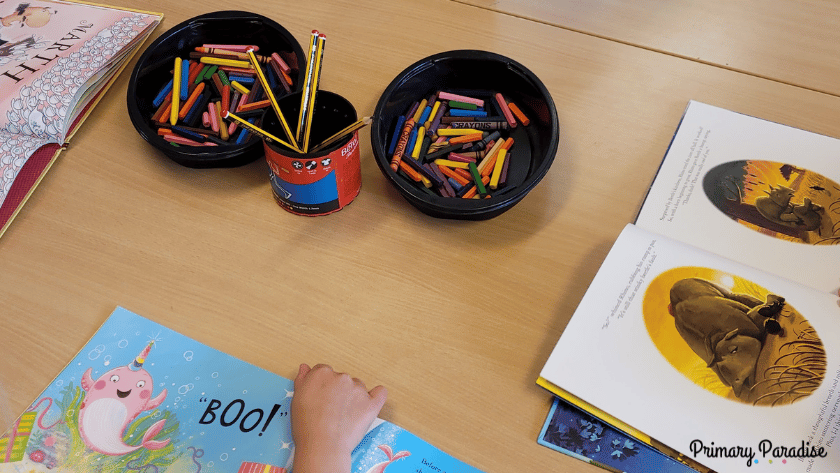
I’ve shared this strategy in the past, but it’s a fun activity for any new phonics skill. Ask students to look for ck words in books from your classroom library. If they’ve learned more than just short vowels, they can also look for words with a final k as well. Have them write their words down on a big chart paper, and then read the words out together and look for the pattern of ck vs k.
Choose a Side
Finally, you can play choose a side. Label one side of the room as the ck side and one side as the k side. Say words out loud that end in the /k/ sound, and have students move to the correct side of the room. Then, show them the word. If students are on the incorrect side, you can have a chat about which is correct and why.
Helping students understand when to use ck vs k will help improve their encoding skills, and is another important piece of the phonics puzzle.
